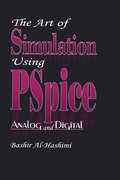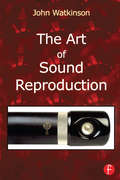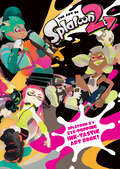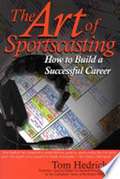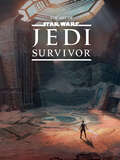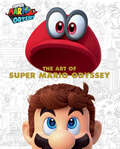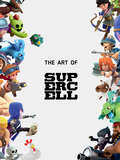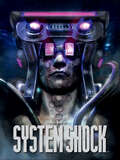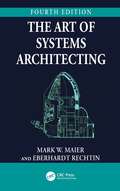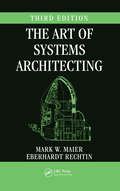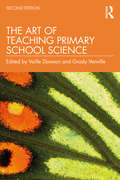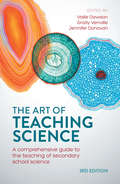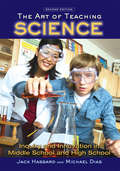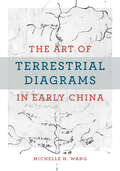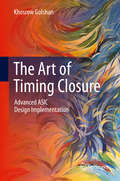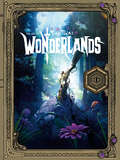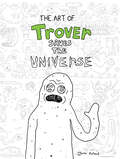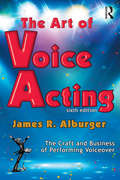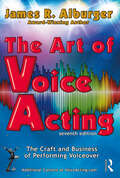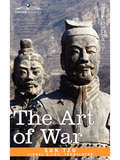- Table View
- List View
The Art of Samurai Shodown
by SNKA glorious digital tome collecting concept art and creator commentary from the development of the newest entry in the Samurai Shodown saga.Since 1993, SNK has rocked the fighting-game world with the visceral combat, iconic characters, and dynamic settings of Samurai Shodown! Now, The Art of Samurai Shodown offers unique insights into the making of the long-awaited revival of the classic fighting franchise. This volume contains nearly 700 documents and illustrations that were used to create the blockbuster game, showcasing this latest episode in thrilling hyper-detail!Dark Horse Books and SNK welcome you to explore this beautiful and dangerous world with this striking, in-depth look at the game that embodies the samurai spirit!
The Art of Simulation Using PSPICEAnalog and Digital
by Bashir Al-HashimiThis comprehensive volume covers both elementary and advanced analog and digital circuit simulation using PSpice. The text includes many worked examples, circuit diagrams, tables, and code listings. It also compares practical results with those obtained from simulation.
The Art of Skull and Bones
by Rick BarbaAn oversize, full color, hardcover cataloging art from the development of Skull and Bones.Experience the journey from outcast to infamous pirate in The Art of Skull and Bones! Explore life on the Indian Ocean with this high-end coffee table book featuring never-before-seen art and discover a world filled with beauty and danger. Dark Horse and Ubisoft invite readers to enter a perilous paradise with The Art of Skull and Bones, a bounty of concept art and creator commentary detailing the perilous adventures that await on the high waters!
The Art of Sound Reproduction
by John WatkinsonDesigned to make life a little easier by providing all the theoretical background necessary to understand sound reproduction, backed up with practical examples. Specialist terms - both musical and physical - are defined as they occur and plain English is used throughout. Analog and digital audio are considered as alternatives, and the advantages of both are stressed. Audio is only as good as the transducers employed, and consequently microphone and loudspeaker technology also feature heavily - making this the most comprehensive, up-to-date text currently available on all aspects of sound reproduction.
The Art of Splatoon 2
by NintendoAn amaze-ink behind-the-scenes look at the making of Splatoon 2, one of the best-selling Nintendo Switch games of all time!Dive into over 380 pages worth of illustrations, key art, and designs of your favorite colorful characters, weapons, gear, locations, maps, and brands. The Art of Splatoon 2 also features storyboards and other extras sure to make a splash with any fan! Don't miss this ink-redible look at the best-selling family-friendly game Splatoon 2!
The Art of Sportscasting: How to Build a Successful Career
by Joe Castiglione Tom Hedrick Mike McKenzieAuthor Tom Hedrick has elicited and gathered strategic and tactical advice from the top professionals in sporstcasting. Over 76 top-notch sports broadcasting personalities share their experience and acquired wisdom, including Curt Gowdy, Ray Scott, Bob Costas, Jack Buck, Jim Nantz, Keith Jackson, Bob Starr, Joe Castiglione, Kevin Harlan, and Mitch Holthus. While their stories are enjoyable and motivating, these pros do more than reminisce. They itemize specific actions with lists of do's and don'ts and tips. Most importantly, they talk about the strong personal values and philosophies that are and have been essential to their success and to the journey for getting there.
The Art of Star Wars Jedi: Survivor
by Respawn Entertainment Lucasfilm Ltd.An oversized, full-color hardcover art book collecting concept art and creator commentary from the next chapter in Cal Kestis&’ thrilling saga.Cal and his friends continue to evade the Empire&’s clutches in the dark times following Order 66, but just as a hidden hope reveals itself, new dangers emerge and threaten to destroy everything that the young Jedi has fought to preserve.Explore the creation of the newest Star Wars Jedi adventure with a tome that intimately chronicles the game&’s development—from visionary design to inspirational artwork to stunning final renders. With heroes and villains both familiar and new, breathtaking locales, and incredible ships and weapons, The Art of Star Wars Jedi: Survivor offers a unique look at the inner workings of a galaxy far, far away.
The Art of Star Wars Outlaws
by Massive EntertainmentA FULL-COLOR ART BOOK COLLECTING CONCEPT ART AND CREATOR COMMENTARY FROM THE FIRST-EVER OPEN-WORLD STAR WARS GAME, SET BETWEEN THE EVENTS OF THE EMPIRE STRIKES BACK AND RETURN OF THE JEDI.Developed by Massive Entertainment in collaboration with Lucasfilm Games, Star Wars Outlaws gives players the opportunity to explore distinct locations across the galaxy, both iconic and new, as Kay Vess—a scoundrel seeking freedom from her past with her companion Nix. As the unlikely heroes embark on a stars-spanning series of high-stakes missions, they constantly risk running afoul of rivaling gangs or falling into the clutches of the evil Galactic Empire.The Art of Star Wars Outlaws explores the creation of this underworld adventure with an expertly designed assembly of thrilling imagery and intimate insights from the game&’s creators. Now readers can get down and dirty as they acquaint themselves with charming rogues, plunge into alien environments, examine exotic tools and weapons, and see how Kay Vess was made to defy the odds.
The Art of Super Mario Odyssey
by NintendoTake a globetrotting journey all over the world--and beyond!--with this companion art book to the hit video game for the Nintendo Switch(TM) system!In October of 2017, Super Mario Odyssey(TM) took the gaming world by storm. Now, discover the art and expertise that went into creating one of Nintendo's best-loved games! This full-color volume clocks in at over 350 pages and features concept art, preliminary sketches, and notes from the development team, plus insight into some early ideas that didn't make it into the game itself! Explore the world of Super Mario Odyssey from every angle, including screen shots, marketing material, and more, to fully appreciate this captivating adventure
The Art of Supercell: 10th Anniversary Edition
by SupercellA first-of-a-kind tome that includes a plethora of art along with commentary showcasing the development of all the Supercell games!!Chronicling each in release order, this volume is a must own for any fan of Clash of Clans, Brawl Stars, Hay Day, Clash Royale, and Boom Beach. Explore each aspect of these games, from developmental concept pieces, to finished, fully rendered environmental shots. This book also gives a one of a kind looks into the games that have never been released, as well as commentary from the Supercell team!Dark Horse Books and Supercell proudly present The Art of Supercell: 10th Anniversary Edition. A perfect retrospective for your collection!
The Art of System Shock
by Robb WatersA full-color hardcover art book chronicling the renowned Nightdive Studios&’ faithful recreation of the iconic cyber-sci-fi action thriller video game, System Shock!When a powerful artificial intelligence named SHODAN is liberated of her ethical constraints, the inhabitants of the Citadel space station are rapidly corrupted into bloodthirsty cyborgs and mutants and placed under her control. It&’s up to a resourceful rogue hacker to traverse the station level by level, battling the monstrous crew and computer-controlled robots before ultimately facing down with the AI herself! Now fans of the groundbreaking cyber-action shooter can explore the development of the lovingly recreated System Shock in intricate detail—including art of Citadel Station&’s mysterious interiors, vile enemies, clever props, and much more. Nightdive Studios and Dark Horse Books invite readers to relive the unforgettable experience of the classic game, remade with enormous care for a new generation. Celebrate the return to Citadel Station with The Art of System Shock.
The Art of Systems Architecting
by Mark W. Maier Eberhardt RechtinThe Art of Systems Architecting, Fourth Edition, provides structured heuristics to improve the least structured, most art‑like elements of systems design. It offers unique techniques to bridge the difference between scientific engineering and qualitative design along with comprehensive methods for combining architectural design with digital engineering. This book illustrates how to go from model‑based systems architecture to model‑based systems engineering and includes case studies of good and bad architectural decision‑making in major systems.Changes to this edition include materials on architecture processes, architecture description frameworks, and integration with model‑based systems engineering (MBSE) and digital engineering. The publication of the ANSI/IEEE 1471 and ISO/IEC 42010 standards on architecture description has provided common vocabulary and organizing methods for documenting architectures. This edition provides a practical application of these standards in architecting and integrating their concepts with a simple process framework. The rise of MBSE and digital engineering tools is in the process of revolutionizing the development of complex systems. The emphasis has been on detailed design descriptions and powerful analysis methods (for example, digital twins). Architects can make effective use of these methods and tools as well, and this new edition provides an integrated set of heuristics and modeling methods to do so. There are many other improvements and additions included to bring this textbook up to date.This book can be used as a reference book for engineers and managers involved in creating new systems, people responsible for developing mandated architecture descriptions, software architects, system architects, and systems engineers, or as a textbook in graduate engineering courses.Exercises are interspersed throughout the text, with some designed for self‑testing and understanding and others intended to provide opportunities for long‑term study and further exploration of the subject.
The Art of Systems Architecting (Systems Engineering)
by Mark W. MaierIf engineering is the art and science of technical problem solving, systems architecting happens when you don't yet know what the problem is. The third edition of a highly respected bestseller, The Art of Systems Architecting provides in-depth coverage of the least understood part of systems design: moving from a vague concept and limited resources
The Art of Teaching Primary School Science
by Grady Venville Vaille DawsonThe long-awaited second edition of The Art of Teaching Primary School Science has evolved to meet the demands of schools in our rapidly changing society. Recognising that children have an innate curiosity about the natural world means that teaching primary school science is both rewarding and critical to their futures. The focus of the chapters reflects the deep expertise in curriculum and pedagogy of the chapter authors. Included are chapters on the nature (wonder) of science and how children learn as well as the nuts and bolts of teaching: planning, pedagogy and assessment. In addressing the teacher education AITSL professional standards for teaching, there are chapters on digital pedagogies, differentiation and advanced pedagogies such as problem-based learning. Finally, there is a section on STEM education that explains how an integrated approach can be planned, taught and assessed. This book is both accessible to all preservice and practising teachers and up-to-date in providing the right mix of theoretical and practical knowledge expected of this generation of primary school teachers. Teacher educators worldwide will find this an essential resource.
The Art of Teaching Science: A comprehensive guide to the teaching of secondary school science
by Jennifer Donovan Grady Venville Vaille DawsonThe Art of Teaching Science has proven itself to be one of the most popular introductory texts for Australian pre-service and in-service teachers, providing guidance on engaging students and helping develop scientifically literate citizens. Beginning with an examination of the nature of science, constructivist and socio-cultural views of teaching and learning and contemporary science curricula in Australian schools, the expert authors go on to explore effective teaching and learning strategies, approaches to assessment and provide advice on the use of ICT in the classroom. Fully revised and updated, this edition also reflects the introduction of the AITSL professional standards for teachers and integrates them throughout the text. New chapters explore: •a range of teaching strategies including explicit instruction, active learning and problem-based learning; •the effective integration of STEM in schools; •approaches to differentiation in science education; and•contemporary uses of ICT to improve student learning. Those new to this text will find it is deliberately written in user-friendly language. Each chapter stands alone, but collectively they form a coherent picture of the art (in the sense of creative craft) and science (as in possessing the knowledge, understanding and skills) required to effectively teach secondary school science. 'Helping each new generation of school science teachers as they begin their careers is crucial to education. This is the updated, third edition of this valuable textbook. It contains a wonderful range of inspirational chapters. All science teachers, not only those at the start of the profession, would benefit from it, in Australia and beyond.'Michael J. Reiss, Professor of Science Education, University College, London
The Art of Teaching Science: Inquiry and Innovation in Middle School and High School
by Michael Dias Jack HassardThe Art of Teaching Science emphasizes a humanistic, experiential, and constructivist approach to teaching and learning, and integrates a wide variety of pedagogical tools. Becoming a science teacher is a creative process, and this innovative textbook encourages students to construct ideas about science teaching through their interactions with peers, mentors, and instructors, and through hands-on, minds-on activities designed to foster a collaborative, thoughtful learning environment. This second edition retains key features such as inquiry-based activities and case studies throughout, while simultaneously adding new material on the impact of standardized testing on inquiry-based science, and explicit links to science teaching standards. Also included are expanded resources like a comprehensive website, a streamlined format and updated content, making the experiential tools in the book even more useful for both pre- and in-service science teachers. Special Features: Each chapter is organized into two sections: one that focuses on content and theme; and one that contains a variety of strategies for extending chapter concepts outside the classroom Case studies open each chapter to highlight real-world scenarios and to connect theory to teaching practice Contains 33 Inquiry Activities that provide opportunities to explore the dimensions of science teaching and increase professional expertise Problems and Extensions, On the Web Resources and Readings guide students to further critical investigation of important concepts and topics. An extensive companion website includes even more student and instructor resources, such as interviews with practicing science teachers, articles from the literature, chapter PowerPoint slides, syllabus helpers, additional case studies, activities, and more. Visit http://www.routledge.com/textbooks/9780415965286 to access this additional material.
The Art of Terrestrial Diagrams in Early China
by Michelle H. WangA study of early Chinese maps using interdisciplinary methods. This is the first English-language monograph on the early history of maps in China, centering on those found in three tombs that date from the fourth to the second century BCE and constitute the entire known corpus of early Chinese maps (ditu). More than a millennium separates them from the next available map in the early twelfth century CE. Unlike extant studies that draw heavily from the history of cartography, this book offers an alternative perspective by mobilizing methods from art history, archaeology, material culture, religion, and philosophy. It examines the diversity of forms and functions in early Chinese ditu to argue that these pictures did not simply represent natural topography and built environments, but rather made and remade worlds for the living and the dead. Wang explores the multifaceted and multifunctional diagrammatic tradition of rendering space in early China.
The Art of Timing Closure: Advanced ASIC Design Implementation
by Khosrow GolshanThe Art of Timing Closure is written using a hands-on approach to describe advanced concepts and techniques using Multi-Mode Multi-Corner (MMMC) for an advanced ASIC design implementation. It focuses on the physical design, Static Timing Analysis (STA), formal and physical verification. The scripts in this book are based on Cadence® Encounter System™. However, if the reader uses a different EDA tool, that tool’s commands are similar to those shown in this book.The topics covered are as follows:Data StructuresMulti-Mode Multi-Corner AnalysisDesign ConstraintsFloorplan and Timing Placement and TimingClock Tree SynthesisFinal Route and TimingDesign SignoffRather than go into great technical depth, the author emphasizes short, clear descriptions which are implemented by references to authoritative manuscripts. It is the goal of this book to capture the essence of physical design and timing analysis at each stage of the physical design, and to show the reader that physical design and timing analysis engineering should be viewed as a single area of expertise.This book is intended for anyone who is involved in ASIC design implementation -- starting from physical design to final design signoff. Target audiences for this book are practicing ASIC design implementation engineers and students undertaking advanced courses in ASIC design.
The Art of Tinkering: Meet 150+ Makers Working at the Intersection of Art, Science & Technology
by Exploratorium Karen Wilkinson Mike PetrichSome of the most creative artists from today&’s maker scene discuss their process, workspaces and more in this inspiring guide to tinkering. The Art of Tinkering is an unprecedented celebration of what it means to tinker: to take things apart, explore tools and materials, and build wondrous, wild art that&’s part science, part technology, and entirely creative. Join 150+ makers as they share the stories behind their beautiful and bold work—then do some tinkering yourself! This collection of exhibits, artwork, and projects explores a whole new way to learn, in which people expand their knowledge through making and doing, working with readily available materials, getting their hands dirty, collaborating with others, and problem-solving in the most fun sense of the word. Each artist featured in The Art of Tinkering shares their process and the backstory behind their work. Whether it&’s dicussing their favorite tools (who knew toenail clippers could be so handy?) or offering a glimpse of their workspaces (you&’d be amazed how many electronics tools you can pack into a pantry!), the stories, lessons, and tips in The Art of Tinkering offer a fascinating portrait of today&’s maker scene. Artists include: Scott Weaver, Arthur Ganson, Moxie, Tim Hunkin, AnnMarie Thomas, Ranjit Bhatnajar and Jie Qi.
The Art of Tiny Tina's Wonderlands
by Amy RatcliffeA fantastic, full-color, oversized hardcover that chronicles the making of Gearbox&’s genre-mashing looter shooter!Go beyond the Borderlands with The Art of Tiny Tina&’s Wonderlands! Embark on a chaotic adventure that reimagines a cast of unforgettable characters as players journey through the Wonderlands. Admire the details of Tiny Tina&’s tabletop world in this handsome hardcover filled with the unique concept art of the environments, creatures, weapons, and characters we all know and love from the minds behind the Borderlands franchise! Join in the fun and become the ultimate Fatemaker by exploring The Art of Tiny Tina&’s Wonderlands! If you don't get it, Tiny Tina is gonna start crying!
The Art of Trover Saves the Universe
by Squanch GamesAn oversized full-color art book showcasing the insane imagination of Rick and Morty co-creator Justin Roiland! Save the universe! Save your dogs! Take your chair to the streets and follow Trover throughout the cosmos as you battle your way through hordes of clones on your quest to stop Glorkon! This freaky and awesome hardcover art book is the perfect companion to Squanch Games's first full length game! Feast your eye holes on 192 pages of crazy concept art and intimate commentary! Dark Horse Books and Squanch Games invite you to embrace weirdness by picking up the greatest art book in the galaxy! Or don't. It's whatever. I'm not your dad.
The Art of Voice Acting: The Craft and Business of Performing for Voiceover
by James AlburgerThe Art of Voice Acting covers all aspects of the craft and business of performing voiceover. This sixth edition is reorganized and completely updated to include the latest information on how to get started in voiceover, performing techniques, setting up a personal recording space, voiceover demos, the basics of running a voiceover business, working with agents, unions, and much more. Dozens of URL’s are included with additional resources and several chapters include all new scripts written specifically for this edition. Two new chapters include contributions from some of the voiceover world’s top professionals. Additional content can be found on the Voice Acting Academy website at AOVA.VoiceActing.com. This is the perfect tool for aspiring voice performers, radio announcers, and stage and screen actors.
The Art of Voice Acting: The Craft and Business of Performing for Voiceover
by James R. AlburgerNow in its seventh edition, The Art of Voice Acting covers all aspects of the craft and business of performing voiceover. Starting with the basics of voice acting, every aspect of the craft and business of performing voiceover is explained in detail, including how to get started, performing techniques, setting up a personal recording space, voiceover demos, the basics of running a voiceover business, unions and much, much more. This edition is completely updated with all new scripts, discussions of the latest trends in voiceover and contributions from some of the voiceover industry’s top performers, casting directors and agents. The book provides a wealth of practical information that can be put to work immediately, as well as hundreds of references to websites and other useful resources. Anyone interested in acting, storytelling, any area of voiceover or simply improving verbal communication skills will benefit from this book. Although The Art of Voice Acting is a great learning tool for the beginner, it will also serve the experienced performer well as a reminder of performing and business tools that are essential in today’s world of acting and voiceover. Additional content, including scripts, audio files, and unpublished content can be found at www.AOVA.VoiceActing.com.
The Art of War
by Sun TsuWritten 2500 years ago, The Art of War is the oldest military treatise in the world, a classic study of competition and rivalry that has been utilized by soldiers ever since. Napoleon studied its strategies and tactics. It is required reading for intelligence personnel in the United States Marine Corps. "Warriors" of Wall Street and in corporation cultures rely on it for guidance. It's even been rumored to help players win at the board game Risk. This 1910 translation by the British Museum's Lionel Giles is the most popular one available, a highly readable version of this still startlingly relevant text.
The Art of War for Computer Security
by Tom MadsenIn this book the author draws inspiration from Sun Tzu's Art of War, a work that explains conflict between nations, and he applies this to the computer security setting, examining how we should consider protecting information systems from accidents or malicious attacks. The author first briefly introduces Sun Tzu. Then each chapter in the book takes its inspiration from an original title in The Art of War, where the author offers a general introduction to the content and then describes its application in a cybersecurity setting. These chapters cover estimates; waging war; offensive strategy; how you prepare for an attack; energy; weaknesses and strengths; the variables that need consideration before embarking on a war; how infrastructure is related to the concept of ground; attack by fire or how skilled attackers hide behind noise; and employing secret agents. The book will be interesting for computer security researchers and professionals who would like some grounding in a security mindset.

